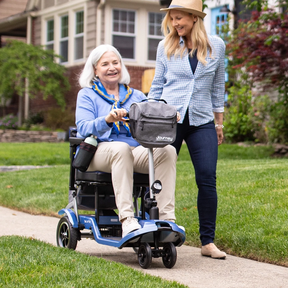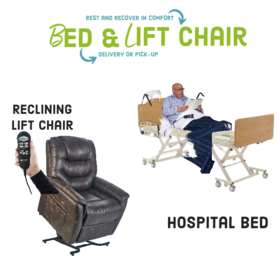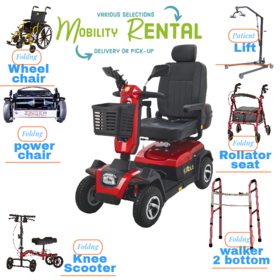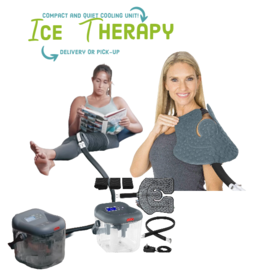Blog Factors that put you at risk of developing DVT(deep venous thrombosis ) and how to prevent it
Thu, 02/17/2022 - 21:44
Factors that put you at risk of developing DVT(deep venous thrombosis ) and how to prevent it
Thrombosis of the deep veins (DVT) is a serious condition involving blood clots in body veins. The risk for DVT varies between people, but some are more susceptible than others.
A deep vein thrombus (DVT) can develop when a blood clot forms in a deep vein, usually in your legs. These blood clots can have deadly consequences. Your lungs may become infected if they disappear from your cell and travel there. Such conditions are known as pulmonary embolisms (PE). It is also referred to as:
- thromboembolism
- postthrombotic syndrome
- postphlebitic syndrome
To find out what contributes to DVT risk and what you can do to lower your risk, continue reading.
Risk factors for DVT
Most DVT cases are found in people over 50 years of age. People who are more likely to get DVT to include:
- Obese or overweight Trusted Source
- During pregnancy or the first six weeks following childbirth
- DVT can be traced to a family history
- A catheter is inserted into a vein
- An injured deep vein
- Recently underwent surgery
- Taking certain birth control pills from Trusted Sources or taking hormone therapy
- It's hazardous if you're overweight and smoke.
- During a long flight, you might be forced to sit for a long time
- Have recently sustained a pelvic, hip, or lower extremity fracture
Tips for preventing DVT
Taking appropriate steps and knowing your risks can significantly reduce your chances of developing DVT.
General tips for preventing DVT
If you want to reduce your risk of DVT, consider the following lifestyle changes:
- Get regular checkups from your doctor
- Weight management
- Be active
- Take care of your blood pressure
- Quit smoking
- Sit for short periods
- Drink plenty of water
Preventing DVT while traveling
You have an increased risk of developing DVT while traveling, especially if you sit longer. Take frequent breaks while driving. If you are traveling by plane, bus, or train, take the following precautions:
- Walk in the aisles to move around as much as possible when allowed.
- Do not cross your legs.
- Wear loose clothing to avoid restricting blood flow.
- Be sure to stay hydrated before and during your trip and avoid alcohol.
- While sitting, stretch your legs and feet and a better option is to buy a reclining lift chair.
After surgery
Hospitalized patients are more likely to develop DVT than non-hospitalized individuals. In hospitals, patients are often immobilized for long periods.
You should raise your leg as much as possible when you are resting. In this way, the calves' vein pressure is relieved, and blood and fluid cannot pool in the calves. Raising your foot allows gravity to aid blood flow from your calf to your hip.
Putting your leg on a cushion as you recline on a sofa is the simplest way to raise your leg, or you can use a reclining lift chair. You are not keeping your feet up when you sit on a footstool or on a pouf with your feet on a footstool or on a pouf - your feet would be well below your hips in this position.
- During hospitalization or after surgery, prevent DVT by:
- Whenever possible, resume your activity.
- Hydrate yourself.
- Sleep with a compression hose or boots.
- Thin the blood with blood thinners.
While pregnancy
During pregnancy or just after childbirth, women are more likely to develop DVT during pregnancy or just after birth. Due to hormonal changes, the blood clots more efficiently, and the baby places pressure on your vessels, thereby impairing circulation. The following actions can be taken to minimize the risk while it cannot be eliminated:
- Stay active.
- Sit for a short period. Consult your doctor about reducing your DVT risk if they recommend bed rest.
- Keep your weight in check.
- Hydrate yourself.
Compression stockings should be worn if your doctor prescribes them. They are most useful for people at risk for deep vein thrombosis.
Exercising, Prenatal yoga, and swimming are low-impact exercises that can be done safely during pregnancy. If you begin an exercise regimen while pregnant, speak to your doctor before starting.
Use Compression stockings in DVT.
 Pantyhose and tights are compression stockings, but they're made from different materials and serve other purposes.
Pantyhose and tights are compression stockings, but they're made from different materials and serve other purposes.
Ordinary stockings are designed to fit loosely around ankles, thighs, and legs, while compression stockings are designed to fit tightly around the calf, thighs, and legs. The ankles are more snugly fitted, while the calves and thighs are less.
By pushing fluid up the leg with the pressure created by the stockings, blood can flow freely from the legs to the heart. Additionally, compression stockings reduce swelling and pain while improving blood flow. They are especially effective in preventing DVT because the pressure prevents blood from pooling. You can get the exact fit size of compression stockings from any reliable medical supply.
Symptoms of PE
PE can also be symptomless. Around 25 percent of patients do not experience any symptoms.
Trusted Source
According to the Centers for Disease Control and Prevention, sudden death is the first symptom of PE in about half of cases.
Signs of PE that may be recognizable include:
- Feeling dizzy
- Perspiration
- Whenever you cough or inhale deeply, you experience chest pain
- A rapid heartbeat
- Blood in the cough
- Rapid heartbeats
When should you seek help?
In the event of suspicion of DVT or PE, you should consult your doctor right away. A physical examination and review of your medical history will be conducted. You may also need tests such as:
- The ultrasonic wave
- venography
- Detects blood clotting problems with D-dimer, a blood test
- Treatment for DVT
Many cases of DVT are treatable. Treatment usually involves heparin and warfarin, two blood thinners that dissolve clots and prevent others from forming. Lifestyle changes and compression stockings may also be prescribed. Among them are:
- Staying active
- Smoking cessation
- Weight maintenance
Getting a vena cava filter may be prudent if blood thinners fail to work. To prevent blood clots from entering the lungs, this filter is designed to capture them. The catheter is placed inside a vein known as the vena cava.
Final thoughts
You can reduce the symptoms of DVT by using some effective medical supplies like compression stockings and reclining lift chairs to relax. Sky Medical Supplies is the best provider if you require these supplies near Denver, Colorado! You can contact to their customer service or visit their website to find out more about them!
Tags
- contest
- event
- supplies
- design
- brand
- video
- Compression
- upright walker
- four wheel walker
- rollator
- wheelchair
- Ostomy
- elegantly
- elegantly
- accessibility
- Mobility
- knee walker rental
- knee scooter sales
- knee scooter
- post operative shoe
- anti-embolic stockings
- pain management
- cryotherapy therapy
- hot cold compress
- compression stockings
- lift chair
- wound Care
- air purifier
- fall prevention
- cushion
- oxygen therapy
- cpap, bipap
- Hospital Bed
- Life Aide
- EMS
- recovery
- splint
- knee brace
- Bathroom
- patient lift
- medical supply
- Wound dressings
- Lightweight Wheelchair
- hospital beds for sale
- sky medical supplies rentals
- compression socks
- Tegaderm Dressing
- Adult Diapers
- Rollator Walker
- Bed Wedge Pillow
- Hospital beds
- Patient Lifts and Slings
- Portable Oxygen Concentrator
- Patient Lift Slings
- knee scooter rental
- folding mobility scooter
- mobility scooter
- medical shoes
- raised toilet seat
- hospital beds for rent
- lift chair recliner
- chair lift
- electric wheelchair
- Power Lift Recliners for Elderly
- Senior Walkers
- Bedside Commodes
- whill wheelchair
- compression hose
- Whill Electric Wheelchairs
- Bariatric Wheelchair
- Recliner Chairs with Lift
- Colostomy Bag
- Crutches
- Medical Wedge Pillow
- skin barrier tape
- Post Surgery Ice Machine
- Bedside Commode
- chair lift recliners
- cane holder scooter
- lift chair prices
- drop arm commode
- rollator walker with ergonomic seats
- Hospital Bed Rental
- Wheelchair Tray
- Golden Technologies Lift Chair
- Nova GetGo Junior Rollator
- power lift recliners
- Knee Scooters and Crutches:
- stand up walker for seniors
- stand up walker as seen on TV
- Women's Walking Canes
- Knee Immobilizers
- Bed Wedge Pillow
- Medical Supply Stores
- Sit to Stand Lifts
- Grab Bars
- Compression Gloves
- incontinence bed pads
- Lift Reclining Chair
- Knee Walker Scooters
- Hernia Belt Near You
- Mobility Scooter Stores Near Me
- Folding Knee Walker
- Oxygen Concentrator Store
- Inogen Battery
- Electric Bed Frames
Related Posts
Get weekly articles in your inbox on the latest medical supply news, exclusive deals, and helpful health tips.
Fri, 04/08/2022 - 15:09
The complete cheat sheet for buying a hospital bed
A Hospital bed might have to be purchased for patients with temporary physical conditions or who are suffering from dementia.






